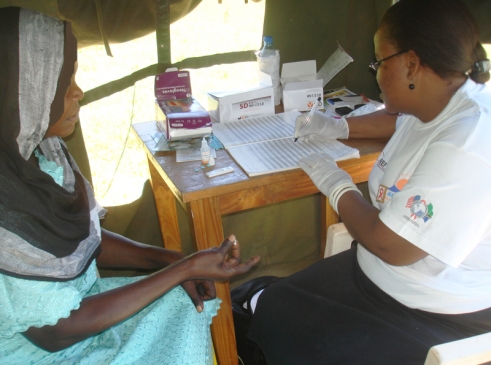By Sarah Marzouk
On 1 November, UNAIDS published a landmark report on HIV and ageing. The report provides the first global estimates since 2006 on the number of people aged 50 and over living with HIV and the proportion of all people living with the virus they constitute. The report also offers the first-ever regional estimates on the number of older people living with HIV.
HelpAge has long called for improved data on older people and HIV, recognising that older people’s exclusion from the HIV response has been largely driven by the lack of data on the nature and scale of the epidemic among the older age group.
Filling the data gap on HIV and AIDS
The UNAIDS report and its findings demonstrate the importance of filling this data gap. It highlights that 3.6 million people aged 50 and over are now living with HIV, constituting over 10% of all positive people in low and middle income countries. These figures are projected to increase rapidly over the coming years.
HelpAge’s CEO Toby Porter comments: “HelpAge welcomes the new UNAIDS report on HIV and ageing. It provides a vital evidence base on the ageing of the HIV epidemic around the world and the need to ensure older people are fully included in the HIV response.
“The numbers of older people already living with HIV and projected increases show the timeliness and importance of this report.”
Older people face specific challenges
Alongside the new estimates, the report also highlights some of the challenges faced by older people and areas requiring further attention in the HIV response.
The report notes the success of antiretroviral therapy in prolonging the lives of people living with HIV, and new infections occurring in older people, driven by the fact that risk behaviour is often overlooked in those aged 50 and above. Older people are shown to be less likely to take a test for HIV than younger people and therefore are more likely to be diagnosed late.
The report also makes the important link between HIV and non-communicable diseases, showing that older people living with HIV face a double disease burden and the challenge of living with multiple chronic conditions.
Age-sensitive HIV services needed
HelpAge’s HIV and AIDS Policy Advisor Rachel Albone notes: “The challenges outlined by UNAIDS in the report mirror those we have been observing in the communities we work in in sub-Saharan Africa. The challenge of low levels of testing among older people is something we have seen over many years and have worked with our partners to address.
“Our work has demonstrated that if offered an HIV test in a way acceptable to them, older people will test for HIV and are keen to know their status. Our work over the last five years in east and southern Africa has resulted in an increase in testing uptake among older people from 30% in 2008 to 80% in 2013.”
Age-sensitive HIV services need to be provided to older people to ensure new infections decrease and those living with HIV receive the treatment, care and support they need to live positively. HelpAge hopes that the issues raised by UNAIDS in its new report will provide the impetus for a more inclusive response to an ageing HIV epidemic in the future.
